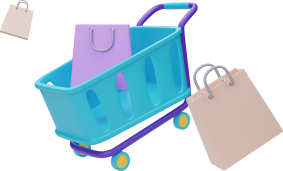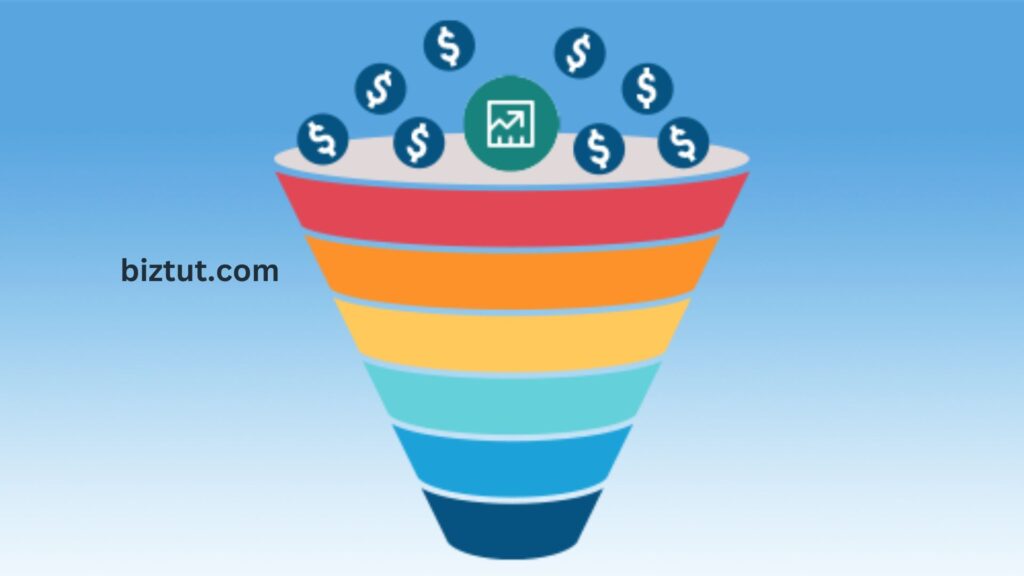Many sales teams work hard, follow all the playbooks, and use every tool they can, but they still struggle to see results. Even with great leads and solid strategies, deals often fall through. This is a common problem in sales—putting in the effort doesn’t always lead to success. In fact, this year, leaders reported that 91% of their teams didn’t meet their sales goals.
The solution is to refine your approach. To succeed in sales, it’s essential to understand what customers need, use data to make smart decisions, and keep improving your processes.
In this article, we’ll look at how to boost sales performance, find the right tools and technologies, and build strong relationships. You’ll also discover examples of outstanding sales success and practical tips to help you get great results.
What Is Sales Performance?

Sales performance is all about how well a sales team gets results, like meeting quotas, following up on leads, and turning potential customers into actual ones. While the final numbers are important, the process matters too. Are sales reps sticking to the steps they need to follow? Are they building and keeping strong relationships with customers?
How to Measure Sales Performance
To measure sales performance, you can look at numbers like sales revenue, conversion rates, close rates, and customer retention. It’s also important to consider softer skills like negotiation, communication, and responsiveness.
To get a complete picture of sales performance, you should track both the hard numbers and the quality of efforts. Many companies use sales enablement software to gain useful insights into how their team is using resources, engaging with prospects, and closing deals.
What Does Good Sales Performance Look Like?
Effective sales performance can look a bit different depending on the company, but at its heart, it’s all about sales reps consistently hitting their targets. Many people believe that a healthy sales pipeline is a strong sign of good performance. If you have 3 to 4 times your quota in the pipeline, it suggests you have plenty of chances to meet those targets. However, if sales reps aren’t using solid sales techniques, that pipeline won’t lead to many closed deals.
One of the biggest signs of good sales performance is how much time reps spend with buyers. High-performing reps typically spend about an extra hour each week interacting directly with prospects compared to their peers. While that may not seem like a lot, it adds up to four extra hours a month, which can make a big difference in sales results.
When tracking sales performance, there are a few benchmarks to keep in mind. For instance, it usually takes more than 12 attempts to engage a potential buyer. This shows just how persistent sales professionals need to be. Plus, research from the Sales Benchmark Index indicates that 70% of buyers prefer to work digitally, so having a strong digital sales strategy is crucial.
As you monitor your team’s performance, a good target for converting leads to opportunities is around 30%. Keep in mind that it’s normal for about 70% of leads to go nowhere. The goal is to ensure that those remaining 30% are worth the effort!
Factors That Affect a Sales Team’s Performance
Sales performance is affected by many factors, like industry changes, poor processes, and a lack of skills. However, the biggest challenge is that sales reps spend nearly 28% of their week on non-selling tasks, such as admin work and meetings, instead of spending that time talking to potential customers.

Let’s dive into some of the key factors that impact sales performance:
Customer Experience
A weak customer experience can really hurt your sales. Are your sales reps communicating clearly? Are the handoffs between teams smooth? Even small communication breakdowns can result in lost sales. According to McKinsey, brands that improve the customer journey can boost their revenue by 10 to 15% while also cutting service costs by 15 to 20%. Your sales process needs to be easy for both the rep and the buyer; otherwise, it could cost you.
Business Processes
Sales performance can suffer from poor business processes. Too many approval steps, communication gaps, and unnecessary delays can stop a sale in its tracks. These inefficiencies can make it seem like the sales team isn’t performing well when the real problem lies in the process.
For example, picture a sales rep who gets buyers excited and ready to close a deal. If every deal stalls because pricing approval needs multiple sign-offs from sales leaders, finance, the Chief Revenue Officer, and the CEO, it can frustrate prospects and cause them to lose interest or turn to competitors. In this case, it looks like the rep can’t close deals, but the complicated approval process is really the issue.
Pricing and Budget
Even the best sales rep can’t overcome issues with product-market fit or pricing alone. Customers may push back on pricing for various reasons. They might not see the value of your solution compared to cheaper alternatives, or they could be worried about additional costs like training and maintenance, which lowers the perceived value.
Sometimes, customers genuinely don’t have the budget, or they might just be looking for a better deal. This can slow down deals and make it seem like the sales rep isn’t performing. Training sales reps on how to handle objections can help; they can emphasize ROI or offer flexible pricing options to keep deals moving.
Company Culture
Sales success is a long-term effort, and reps need ongoing support to stay sharp. This is where company culture comes into play. Do you offer incentives for great performance? Is there continuous training and coaching available for reps, or are they just expected to hit the ground running without much guidance? Research shows that ongoing coaching can lead to salespeople spending 23% more time selling and 21% less time on post-sales tasks.
Moreover, if your sales team isn’t aligned with marketing, customer success, and other departments, performance will suffer. Messaging, resources, and product knowledge need to be in sync to create a seamless experience for both team members and customers.
Sales Enablement
Without proper onboarding, training, and access to relevant resources, sales reps often waste time guessing and scrambling for information, which slows down the entire sales process. Sales enablement addresses this issue by providing the entire team with the tools they need in one central location. This streamlined approach saves time and helps prevent one of the biggest obstacles to sales performance: searching for content and information.
10 Strategies to Improve Sales Performance
There isn’t a one-size-fits-all strategy to improve sales performance for every organization. However, once you have your goals, roles, technology, and support systems in place, you can make some real progress.

Here are 10 practical ways to boost your sales team’s performance:
1.Set SMART Goals and Use Data-Driven Sales Metrics
Setting SMART goals—Specific, Measurable, Achievable, Relevant, and Time-bound—helps give your sales team a clear direction. This clarity allows them to track their success. For example, a SMART goal might be to increase sales quota achievement by 10% in the next quarter. Here’s how this goal breaks down:
- Specific: It targets quota achievement.
- Measurable: It aims for a 10% increase.
- Achievable: Based on past performance, it’s realistic.
- Relevant: It directly connects to sales performance.
- Time-bound: It has a deadline—next quarter. Once you set these goals, it’s crucial to track key performance indicators (KPIs) like:
- Win rate: The percentage of closed deals compared to lost ones.
- Sales pipeline coverage: The ratio of open opportunities to sales quotas.
- Conversion rates: How many leads become customers.
- Sales cycle length: How long it takes to close deals.
- Average deal size: The typical value of sales transactions.
- Customer acquisition cost (CAC): What it costs to gain a new customer. Monitoring these metrics alongside your SMART goals will give you a clear view of how your sales reps are performing over time. For instance, if your win rate is low, it might be time to provide more personalized training or rethink your lead qualification process. Regularly checking in on goals and performance data helps keep your team on track and spot areas for improvement.
2. Optimize Your Sales Strategy and Structure
A solid sales strategy aligns your efforts with your business goals. It defines your target markets, key selling points, and how to meet customer needs. For example, a good strategy might focus on building relationships with complex decision-making teams while using AI to tailor your messaging to their specific pain points. Don’t hesitate to review your sales strategy every few months. Even though it sounds like a lot of work, it’s vital to ensure your approach remains relevant to your market. Your sales organization’s structure also matters. Different sales models work better for various types of businesses, selling methods, or solutions. It’s common for businesses to start with one structure and then switch as they grow. Take the time to evaluate the three main sales models—the assembly line, the island, and the pod—to see which suits your business best.
3.Find a Sales Methodology That Works
A strong sales methodology helps reps understand customer needs, offer tailored solutions, and continue supporting customers after the sale. Some popular methodologies include SPIN selling, which focuses on asking key questions to identify customer pain points, and Challenger Sales, which encourages reps to teach customers something new and challenge their existing thinking. Regularly check if your current sales methodology fits your company’s growth and market needs. As your business evolves, your sales approach should too.
4. Provide Continuous Sales Training, Coaching, and Support
To set your sales team up for success, start with a solid onboarding process that gives them the foundational knowledge and skills they need. This helps them become productive faster. Ongoing training is equally important as it helps reps adapt to changing buyer expectations and stay updated on industry trends. Besides training, offer constructive feedback and tailored coaching to help nurture talent and boost performance. Sales managers should regularly evaluate reps, helping them refine their approach while also celebrating their wins. This mix of growth and recognition keeps the team motivated to overcome challenges. Sales enablement ties everything together by equipping your reps with the right content, tools, and resources. This ensures they spend more time engaging with customers rather than hunting for information, allowing for more meaningful interactions.
5. Tame Your Sales Content Chaos
Sales content should help close deals, but managing it can often get messy. On average, sales reps use over 17 pieces of content throughout the sales process and spend 40% of their time searching for or creating content. This can lead to off-brand, outdated materials that hurt the quality of sales interactions. Centralizing your sales content makes it easy for teams to access the latest and most relevant information. With everything at their fingertips, reps can confidently engage with buyers. Regular audits also help identify and remove outdated or overlapping content, keeping your resources effective. Using sales enablement technology can organize and manage all this content in one place within your team’s workflow.
6. Elevate Your Customer Experience
A smooth customer experience—from first contact to purchase and beyond—can greatly enhance sales performance and customer satisfaction. If customers face delays or poor follow-ups, they may hesitate to buy again. To improve the customer experience, align your sales, marketing, customer success, and other teams to provide consistent, helpful interactions at every touchpoint. One great way to stay connected with customers is by creating a Customer Advisory Board, where they can share feedback and insights to help improve your products and services. Happy customers can become your best advocates, often referring new business your way.
7. Align Incentives with Strategies That Boost Sales
Your incentives should drive behaviors that align with your sales goals. This will enhance performance, retain top talent, and keep your team focused on initiatives that grow revenue. Reward sales activities that promote your top products, break into new markets, or retain customers. Be transparent about sales targets and offer meaningful incentive plans for achieving them.
8. Embrace Technology and Digital Transformation
Technology and automation can be great assets for your sales team, but only when used wisely. Many employees feel overwhelmed by the number of tools available, which can disrupt productivity. Focus on adopting tools that improve daily workflows, like sales dashboards and CRMs to manage customer data or AI platforms that prioritize prospects and personalize interactions. Ideally, these tools should integrate with each other to streamline your processes, from lead generation to closing deals. Sometimes, a simple face-to-face conversation can be quicker than navigating complex systems. Keep things straightforward and avoid overwhelming your team with too many tools.
9. Make the Most of Every Sales Channel Available
You never know where your next buyer might be, so use every sales channel at your disposal. This could include email, text, phone, social media, partner sales, or even attending industry events. As you explore new channels, make sure to provide reps with training, content, and guidance on how to maximize each one. Tailoring messaging and content for different channels will help your team connect with buyers effectively.
Also Read: How to Generate Leads for Small Business?
10. Make Personalization Easy
Personalization is essential for engaging buyers, but it can take a lot of time for reps. To make it easier, consider what your sales reps need: lots of content to share and little time to do it. They need a simple way to quickly personalize emails, presentations, and more. Enablement teams should prepare foundational content—like a customer deck—featuring variations for different industries and personas in one master resource. Adding templated emails and social content can also streamline the personalization process for reps looking to share thought leadership quickly. You can also leverage conversational intelligence, which uses AI to tailor messaging, create real-time responses, and recommend relevant content based on buyer preferences and past interactions. Finally, digital sales rooms (DSRs) can enhance personalization by offering a curated, interactive space where buyers can access tailored content and resources. Gartner predicts that 30% of B2B sales cycles will be conducted through DSRs, which will also help manage the customer lifecycle.











